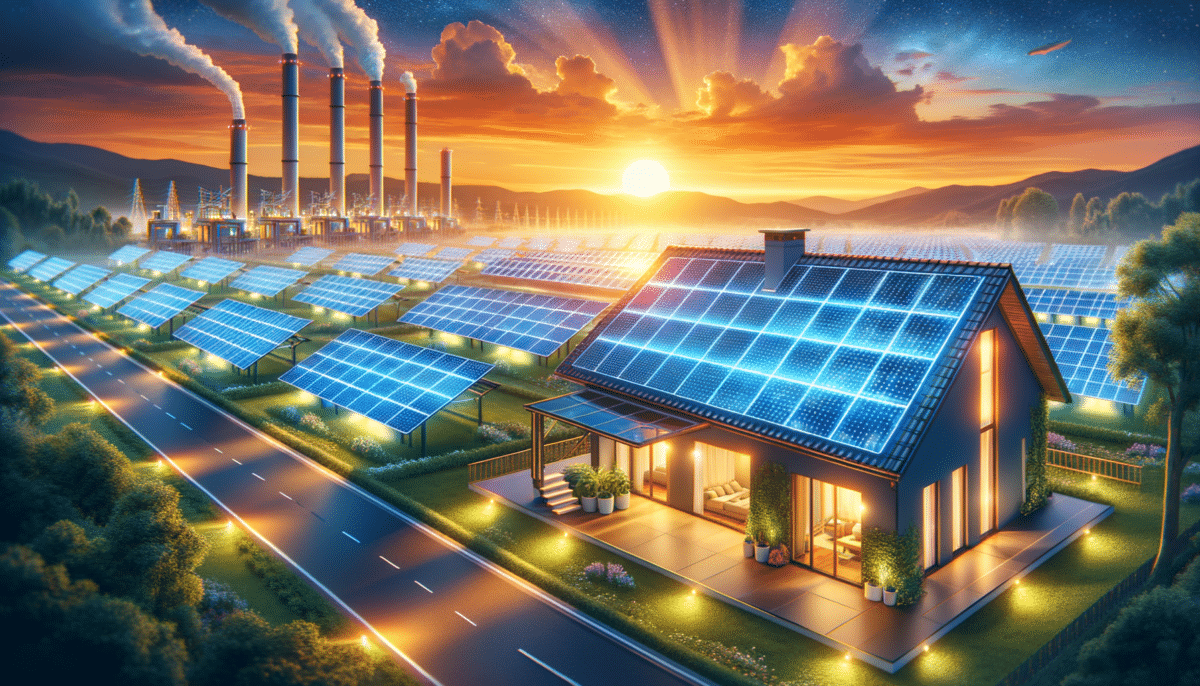Understanding Solar Systems: An Overview
Solar systems have become an integral part of the modern energy landscape. They harness the sun’s energy, converting it into electricity that powers homes, businesses, and even vehicles. The basic components of a solar system include solar panels, an inverter, a battery storage system, and a monitoring system. Solar panels capture sunlight and convert it into direct current (DC) electricity. An inverter then transforms this DC electricity into alternating current (AC) electricity, which is used by most household appliances.
There are several types of solar systems, including grid-tied, off-grid, and hybrid systems. Grid-tied systems are connected to the local utility grid, allowing homeowners to use solar power when available and draw from the grid when necessary. Off-grid systems are independent of the utility grid, requiring battery storage to ensure a continuous power supply. Hybrid systems combine both features, offering the flexibility of grid connection while maintaining battery storage for backup.
The adoption of solar systems is driven by several factors, such as decreasing costs, technological advancements, and environmental concerns. As the world seeks sustainable energy solutions, solar systems offer a viable path forward, reducing reliance on fossil fuels and decreasing greenhouse gas emissions.
The Mechanics of Solar Panels
Solar panels are the heart of any solar system. They consist of photovoltaic (PV) cells made from silicon, which absorbs sunlight and generates an electric current. This process, known as the photovoltaic effect, is what allows solar panels to convert sunlight into usable electricity. The efficiency of solar panels—the percentage of sunlight converted into electricity—has improved significantly over the years, making solar power more accessible and cost-effective.
There are three main types of solar panels: monocrystalline, polycrystalline, and thin-film. Monocrystalline panels are known for their high efficiency and sleek appearance, making them a popular choice for residential installations. Polycrystalline panels are slightly less efficient but are more affordable, making them suitable for larger installations. Thin-film panels are lightweight and flexible, ideal for unconventional spaces or portable applications.
Advancements in solar panel technology continue to push the boundaries of efficiency and cost. Innovations such as bifacial panels, which capture sunlight on both sides, and perovskite solar cells, known for their potential to significantly lower costs, are paving the way for even broader adoption of solar energy.
Economic and Environmental Benefits
Investing in solar systems offers both economic and environmental benefits. Economically, solar power can significantly reduce electricity bills. Many governments offer incentives, such as tax credits and rebates, to encourage solar adoption, further enhancing the financial appeal. Additionally, solar systems increase property value, making them a wise investment for homeowners.
Environmentally, solar power is a clean, renewable energy source that reduces carbon emissions. Unlike fossil fuels, solar energy does not produce harmful pollutants, contributing to a healthier planet. By reducing reliance on non-renewable energy sources, solar systems play a crucial role in combating climate change and promoting sustainability.
Furthermore, solar energy supports energy independence. By generating their own electricity, homeowners and businesses can reduce dependence on external energy suppliers, enhancing energy security and resilience against fluctuating energy prices.
Challenges and Considerations
Despite the numerous benefits, there are challenges to consider when adopting solar systems. The initial cost of installation can be substantial, although decreasing prices and financial incentives help mitigate this barrier. Additionally, the efficiency of solar systems can be affected by geographic location, weather conditions, and the orientation of the panels.
Maintenance is another consideration. While solar systems are generally low-maintenance, regular cleaning and occasional inspections are necessary to ensure optimal performance. Moreover, the lifespan of solar panels, typically around 25-30 years, requires long-term planning for eventual replacement or upgrades.
It’s also important to consider the environmental impact of manufacturing and disposing of solar panels. Efforts are underway to improve recycling processes and reduce the carbon footprint of solar panel production, making the industry more sustainable in the long run.
The Future of Solar Energy
The future of solar energy is bright, with continuous advancements and increasing adoption worldwide. As technology improves, solar systems are becoming more efficient, affordable, and accessible. Innovations such as solar roof tiles, which integrate seamlessly with traditional roofing materials, and solar windows, which generate electricity while allowing natural light, are expanding the possibilities for solar energy integration.
Moreover, the integration of solar power with smart home technology and energy storage solutions is creating more resilient and efficient energy systems. The development of smart grids, which optimize energy distribution and usage, is further enhancing the role of solar energy in the broader energy landscape.
As the world moves towards a more sustainable future, solar energy is poised to play a pivotal role in reducing carbon emissions and promoting energy independence. By embracing solar technology, individuals and communities can contribute to a cleaner, greener planet while enjoying the economic benefits of renewable energy.
